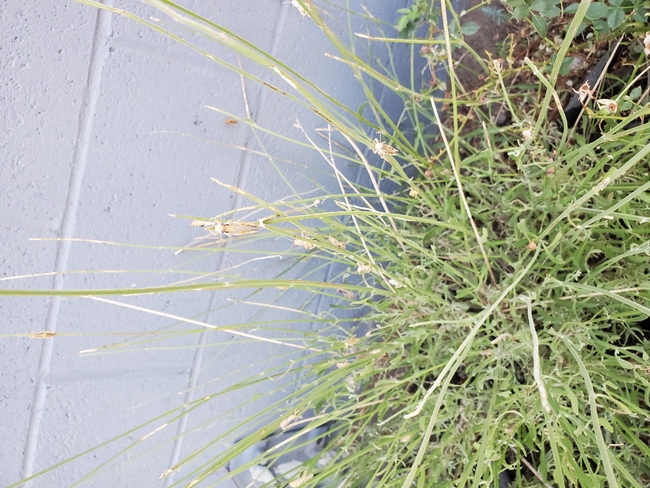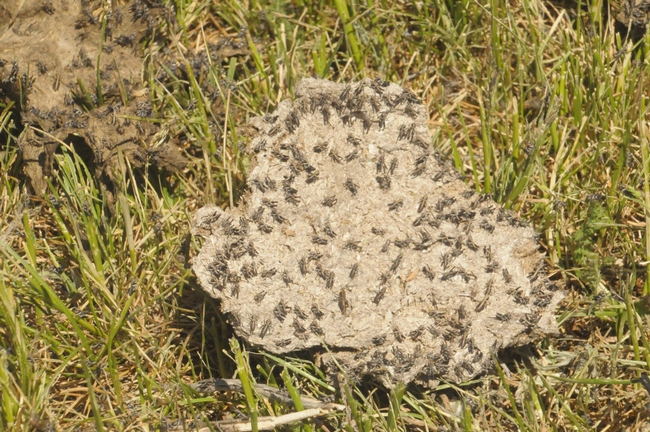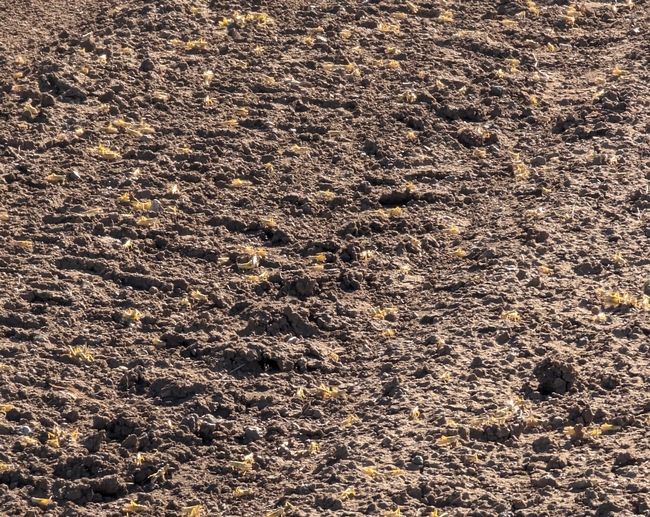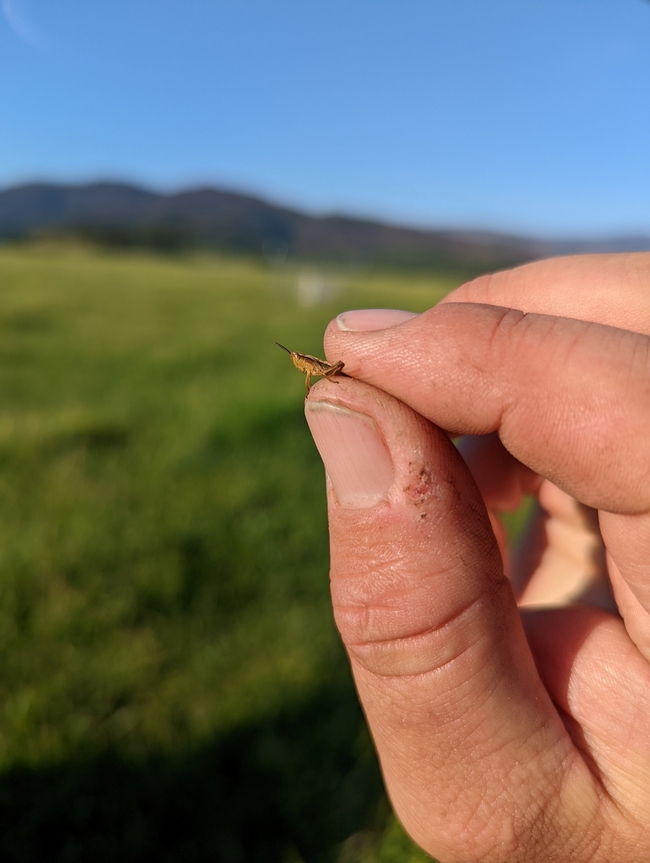Grasshoppers gobble crops, farm profits
UCCE advisors share control, abatement strategies across Northern California
That buzzing noise in Northern California is the sound of grasshoppers chewing a path of destruction through crops and pollinator-friendly plants as they hop across an expanding area.
This is the fifth year in a row that massive numbers of grasshoppers have overrun Modoc County and “probably the worst I've seen yet,” said Laura Snell, a University of California Cooperative Extension livestock and natural resource advisor in Modoc County, located in the northeastern corner of the state.
In past years, Snell has heard from farmers who have lost up to 70% of their hay crop. This year, she is hearing of grasshopper damage from farmers who grow a wider array of crops, including onions and garlic – crops that the pests eschewed in past years.
“I've had an even broader group of producers contact me about damage,” Snell said. “Our local vegetable producers are being affected, decreasing farmers market and food hub products. Bee producers are not seeing good honey yields due to grasshoppers eating huge amounts of pollinator plants.”
Modoc County isn't alone. Lassen, Sierra, Plumas, Siskiyou, Tehama, Butte, Placer and Nevada counties are being invaded by grasshoppers.
“The county ag commissioners are circulating a survey to get an idea of other counties that may be affected,” Snell said. “Things like droughts and – I suppose, fires as well – would affect grasshopper migrations.”
While scientists don't know what's causing the explosive growth of grasshopper populations, there are some contributing factors, according to Tom Getts, UC Cooperative Extension weed ecology and cropping systems advisor for Lassen, Modoc, Plumas and Sierra counties.
In the past, grasshopper outbreaks seemed to be more isolated, and the populations tended to crash after a year or two. Getts said, “For whatever reason, the population cycle does not appear to have been broken, and they continue to have high numbers.”
Grasshoppers can consume 30% to 250% of their body weight per day, according to a fact sheet about grasshoppers, co-authored by Getts. While grasshopper nymphs walk, adults can fly 15 miles or more.
Getts and UC Cooperative Extension farm advisors have been giving presentations throughout the intermountain region on grasshoppers and the various control methods.
“The difficulty to controlling them is the scale and their ability to move,” Getts said. “The insects need to be targeted at a small growth stage for the tactics to be most efficacious. Once they are adults, it doesn't matter what one grower does to control them if their neighbor doesn't do anything.”
UCCE farm advisors in multiple counties are working on abatement options.
They recommend monitoring in April–May to control grasshoppers while they are still nymphs and susceptible to insecticides. Birds, spiders, rodents and fungi also can help keep the insects in check, but years of drought have reduced the fungi.
“The population of grasshoppers in the region have increased in size, scope and density in recent years,” said Rob Wilson, a UC Cooperative Extension agronomy and pest management advisor and director of the Intermountain Research and Extension Center in Tulelake.
The massive growth and spread of the pests is a problem because 30 pounds of grasshoppers can eat as much forage as a 600-pound cow can eat per day, he explained.
Part of the challenge of controlling grasshoppers is their changing behavior. In the past, grasshoppers would go away after a couple of years, now they persist. They used to thrive in dry fields, but last year, grasshoppers migrated 10 to 20 miles into irrigated fields, Wilson said.
Wilson, who has been monitoring grasshoppers near Tule Lake since early April, said that In some fields, there were 20 to 30 nymphs per square yard. More than eight nymphs per square yard can cause economic damage.
As if the grasshoppers themselves weren't enough of a nuisance, they attract other pests, including blister beetles.
“As the grasshopper population increases, you are bound to see an increase in all of the species that eat them over time,” Getts said. “Blister beetles cause terrible blisters when they get on your skin, hence the name, but they can also be problematic for livestock if they contaminate bales of hay.”
Getts recommends that growers take steps to prevent grasshopper populations from building over successive years. Growers should coordinate with neighboring growers to treat their fields due to the limited longevity and efficacy of treatments on individual fields.
[Editor's note: The sentence comparing the appetite of grasshoppers to that of cows was revised to clarify that grasshoppers aren't eating cows.]






